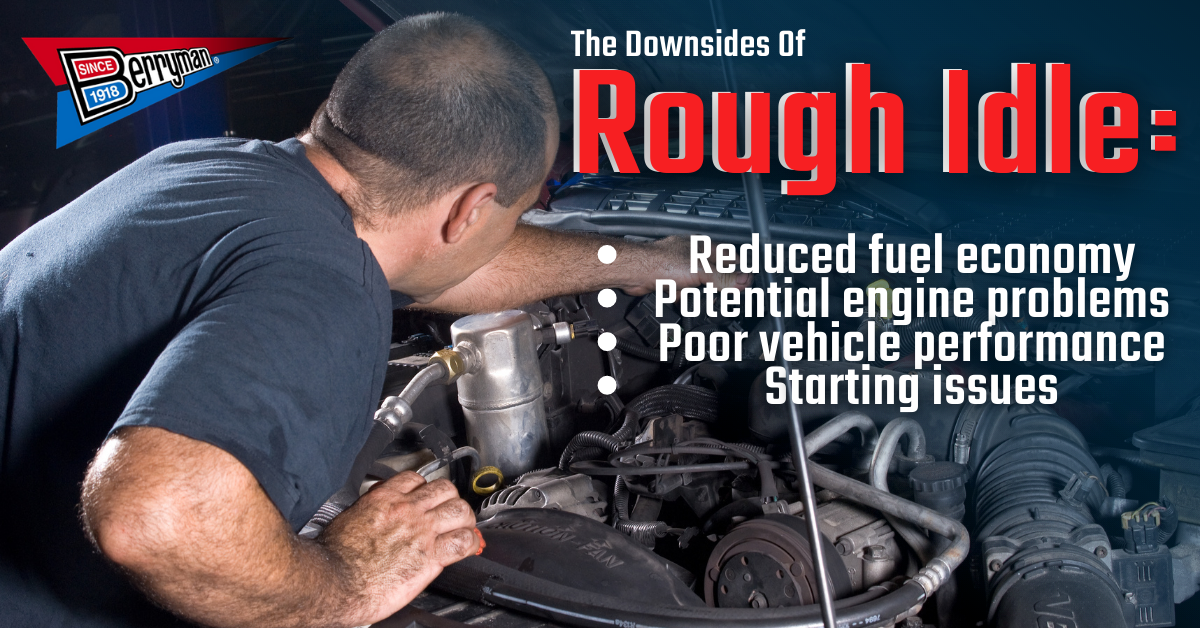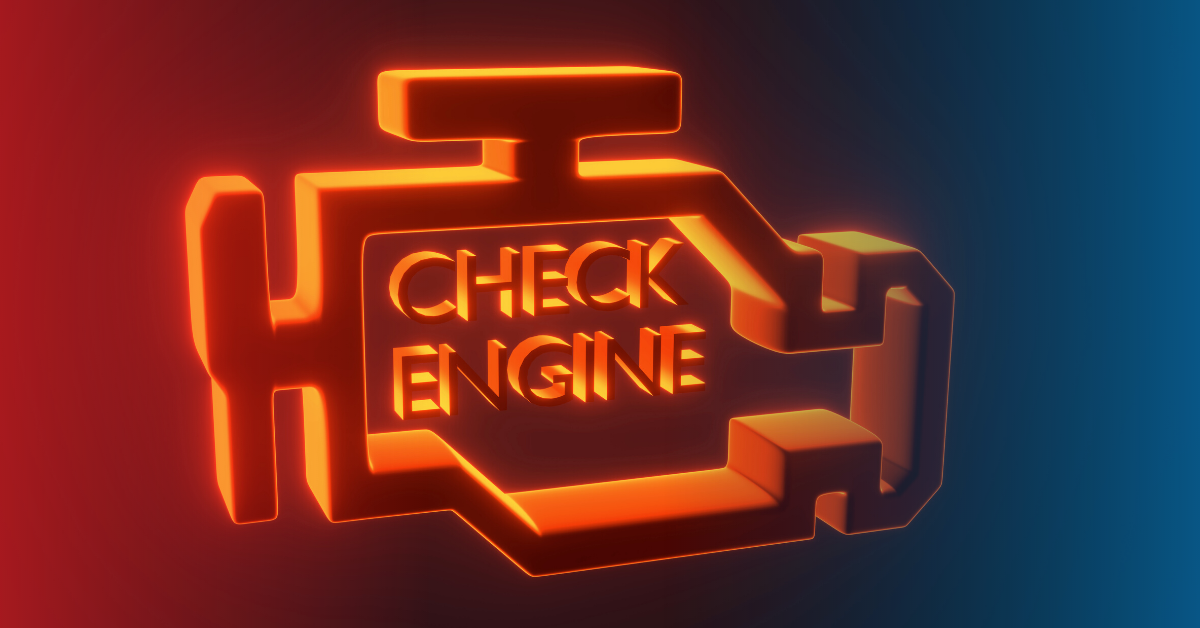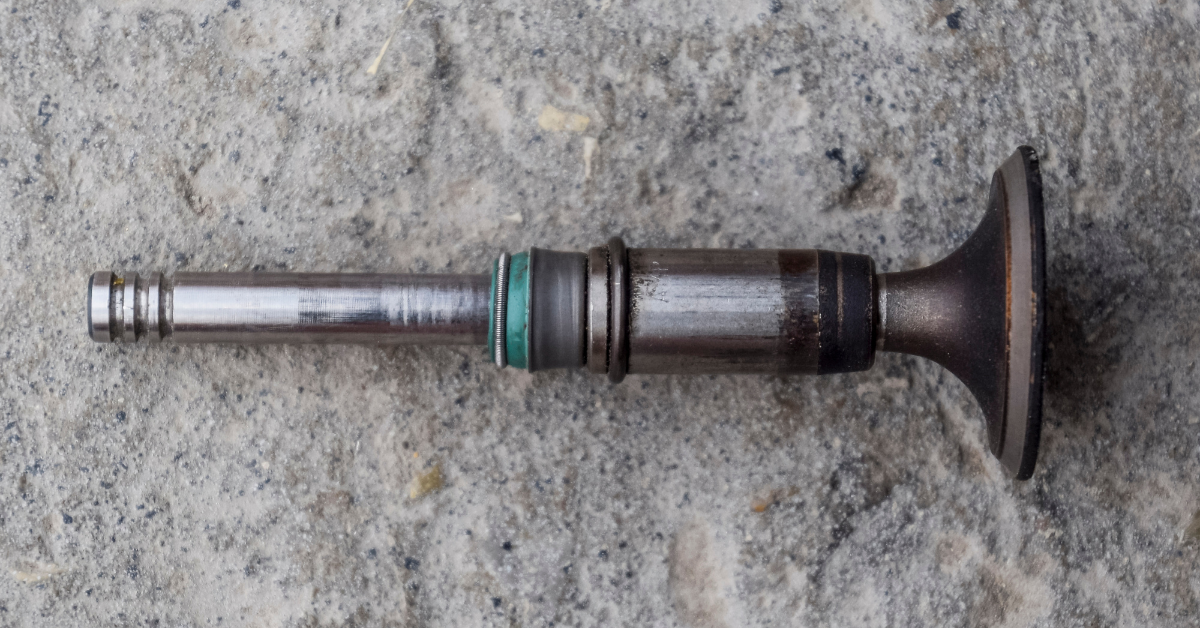If your car has a rough idle, it won’t run at a steady rate after you start the engine. Maybe it consistently stalls, or runs at varying RPMs — without putting your foot on the gas — or both!
In any case, there are several potential downsides of rough idle, as well as several potential causes.

Common Downsides of Rough Idling:
- 1. Reduced fuel economy
- 2. Potential major engine problems
- 3. Poor performance
- 4. Starting issues
Since a smooth idle depends on just the right mixture of fuel and air, there are many places in which the combination might encounter imbalance.
Some Questions Your Mechanic Might Ask You:
- 1. Does it happen after the car has been parked for hours, (on cold starts)?
- 2. Does it happen when you restart your already warm vehicle?
- 3. All the time?
- 4. Are there any odd noises or do you see any smoke coming out?

Your Check Engine light is on?
If your vehicle is flashing the “Check Engine!” light at you every time you turn it on, it’s crucial to find out what’s going on as soon as you can. Acknowledging and fixing the problem should be a top priority — before it gets worse and more expensive!
We know… finding the problem is not always easy. There could be any number of issues going on, including:
- ∙ a dirty air filter.
- ∙ throttle body incorrectly functioning.
- ∙ a vacuum leak.
- ∙ intake valve issues.
- ∙ clogged fuel injectors.
So let’s dive in, step-by-step, to find the issue.
The most accessible place to start is with the air filter.
First, check the air filter. It is there to keep dirt, dust and other foreign matter from entering the engine.
Pull it out and inspect it. If your air filter looks particularly dirty, (and you cannot see daylight through the filter material), then it needs to be replaced. Contact your local auto parts store for a new replacement.
Most automakers suggest a yearly air filter replacement. You can pull out your manual for this information.
Changing the air filter is easy; it’s an inexpensive fix to solve your problem, as well!
Please remember, it is important to clean the filter housing of any accumulated dirt that is in there before you close it back up!
While you have the air filter off, you might as well also check the throttle body, which could also be part of your rough idle issues.
If the throttle body also looks dirty, that likely means it is impeding airflow. It should be cleaned as soon as possible — and if that is the case, you’re in luck! The B-12 Chemtool Air-Intake and Throttle Body Cleaner* (part #2209) quickly and safely cleans, lubricates, and protects today’s intricate computerized fuel injection air-intake components. With our advanced formula, it also improves hard starting, hesitation, and responsiveness.
* VOC-compliant in all 50-states, so no need to worry whether or not it is legal in your state.
After you’ve cleaned the throttle body and replaced the air filter, and neither fixed your issue, then it’s time to check for vacuum leaks.
When the car is running, you may hear a sucking noise from somewhere in the engine compartment. This is a result of PVC pipe becoming brittle and cracking, or old rubber tubing getting gummy from oil vapor and deteriorating. When a vacuum leak occurs, some air enters the intake manifold without passing through the throttle body.
If you can find and fix issue here, that’s excellent! Replace or clean the problematic part(s).
If your vehicle is older, it’s probably a good time to perform a maintenance check anyway.
Next up: Inspecting your intake valves.
Maybe you have dirty intake valves and/or clogged fuel injectors. If your car is old enough to have a carburetor, the treatment is the same as it is for fuel injectors.
In using high-pressure fuel injectors to precisely spray the exact amount of fuel into each cylinder at just the right moment, today’s emission controlled engines are extremely fuel-efficient. The injectors’ spray nozzles have tiny openings, which can get clogged from the carbon that is a byproduct of the combustion process. This leads to less fuel going through the injectors, leading to worse performance and possibly rough idling.
Oh, you haven’t done any fuel system maintenance in the last year? Then it is most definitely time for a quality fuel additive! We suggest dissolving stubborn carbon buildup for a dramatic increase in performance and overall drivability with Berryman® Intake Valve & Combustion Cleaner.

The least expensive route: Berryman® Product’s Super Concentrated Valve & Injector Cleaner (part #3012). This is a concentrated detergent and H.E.S.T. additive that ensures targeted one-tank clean-up of intake valves and fuel injectors or carburetors. It also dissolves gum, varnish, and other deposits from intake valves and fuel injectors — a common result from the repeated use of poor-quality fuels.
Go on… Improve your fuel economy and maximize injector life!
Need something a little stronger to get the job done? Our strongest fuel additive is B-12 Chemtool Total Fuel System Clean-Up (part #2616). This product is formulated for vehicles that have not had regular fuel system maintenance. It uses H.E.S.T. and powerful detergents to maximize one-tank clean-up of intake valves, fuel injectors, carburetors, and combustion chambers.
If you haven’t used a fuel additive in at least 10-15,000 miles, be good to your car—go ahead and grab part #2616.
Good luck, and let us know how it goes!
Related articles you might like:
